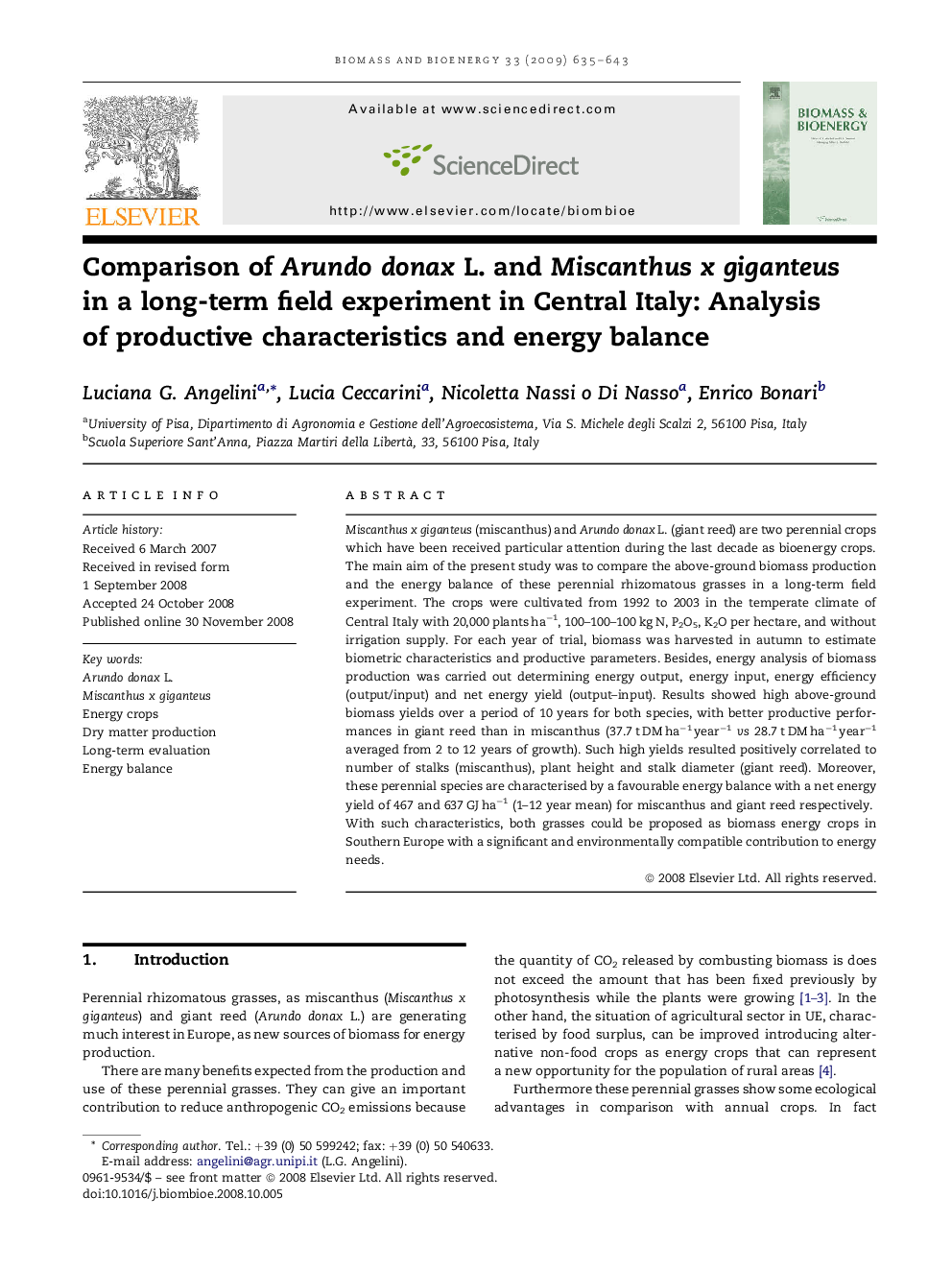| Article ID | Journal | Published Year | Pages | File Type |
|---|---|---|---|---|
| 678196 | Biomass and Bioenergy | 2009 | 9 Pages |
Miscanthus x giganteus (miscanthus) and Arundo donax L. (giant reed) are two perennial crops which have been received particular attention during the last decade as bioenergy crops. The main aim of the present study was to compare the above-ground biomass production and the energy balance of these perennial rhizomatous grasses in a long-term field experiment. The crops were cultivated from 1992 to 2003 in the temperate climate of Central Italy with 20,000 plants ha−1, 100–100–100 kg N, P2O5, K2O per hectare, and without irrigation supply. For each year of trial, biomass was harvested in autumn to estimate biometric characteristics and productive parameters. Besides, energy analysis of biomass production was carried out determining energy output, energy input, energy efficiency (output/input) and net energy yield (output–input). Results showed high above-ground biomass yields over a period of 10 years for both species, with better productive performances in giant reed than in miscanthus (37.7 t DM ha−1 year−1vs 28.7 t DM ha−1 year−1 averaged from 2 to 12 years of growth). Such high yields resulted positively correlated to number of stalks (miscanthus), plant height and stalk diameter (giant reed). Moreover, these perennial species are characterised by a favourable energy balance with a net energy yield of 467 and 637 GJ ha−1 (1–12 year mean) for miscanthus and giant reed respectively.With such characteristics, both grasses could be proposed as biomass energy crops in Southern Europe with a significant and environmentally compatible contribution to energy needs.
